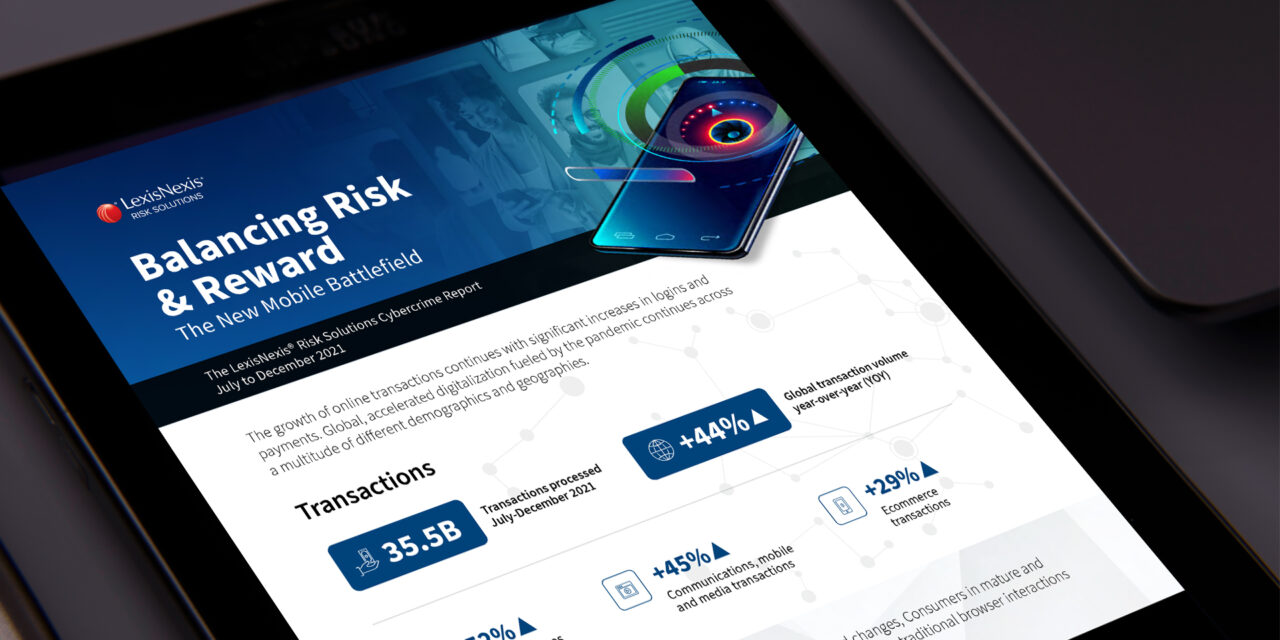Latest LexisNexis Risk Solutions Cybercrime Report finds that mobile share of transactions reached 75%, leading to spike in digital fraud.
LexisNexis Risk Solutions has released its biannual Cybercrime Report, which shows global data and trend analysis on digital transactions.
This latest edition of the Report reveals that the mobile share of transactions in the LexisNexis Digital Identity Network reached 75% for the first time, which underlines easily accessible digital banking solutions, the embrace of cryptocurrency exchanges by investors in South-east Asia, and Buy Now Pay Later (BNPL) seeing global popularity in the payment landscape.
The Cybercrime Report analyzed 35.5 billion transactions over the six-month period from July to December 2021, up 44% year over year (YoY). This stemmed from increased transaction volumes from existing customers and an increased customer base within the Digital Identity Network.
Although global pandemic-related restrictions eased in the second half of 2021, the report found online transaction volumes continued to grow, specifically across financial services (52% YoY) and communications, mobile and media (45% YoY).
Increasing consumer confidence has led to enhanced demand for a customer-centric digital world. Companies are prioritizing their digital customer experience strategies to retain and acquire new customers, which is advantageous for legitimate consumers but may lead to opportunities for fraudsters.
APAC has shown a continued increase of 135% YOY in bot volumes. Automated bot attacks are the fraudster’s primary attack vector in financial services, ecommerce, and communications, mobile and media.
For more key findings on online and mobile transactions, rise in scams, human-initiated versus bot attacks, and the case of one prolific fraudster, check out this infographic.


















